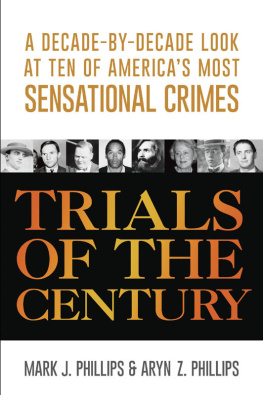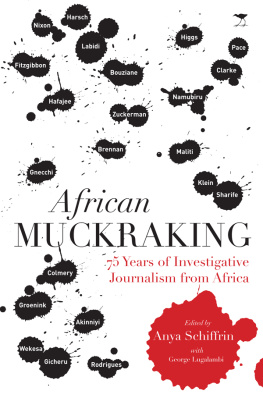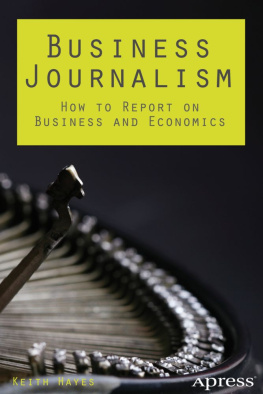SENSATIONALISM
SENSATIONALISM
Murder, Mayhem, Mudslinging, Scandals,
and Disasters in 19th-Century Reporting
DAVID B. SACHSMAN AND DAVID W. BULLA, EDITORS

Transaction Publishers
New Brunswick (U.S.A.) and London (U.K.)
Copyright 2013 by Transaction Publishers, New Brunswick, New Jersey.
All rights reserved under International and Pan-American Copyright Conventions. No part of this book may be reproduced or transmitted in any form or by any means, electronic or mechanical, including photocopy, recording, or any information storage and retrieval system, without prior permission in writing from the publisher. All inquiries should be addressed to Transaction Publishers, RutgersThe State University of New Jersey, 35 Berrue Circle, Piscataway, New Jersey 08854-8042. www.transactionpub.com
This book is printed on acid-free paper that meets the American National Standard for Permanence of Paper for Printed Library Materials.
Library of Congress Catalog Number: 2012045370
ISBN: 978-1-4128-5171-8
Printed in the United States of America
Library of Congress Cataloging-in-Publication Data
Sensationalism : murder, mayhem, mudslinging, scandals, and disasters in 19th-century reporting / David B. Sachsman and David W. Bulla, editors.
pages cm
Includes bibliographical references.
1.Press--United States--History--19th century.2.Sensationalism in journalism--United States--History--19th century. 3.Journalism--Objectivity--United States--History--19th century. 4. Journalism--United States--History--19th century. 5. Journalists--United States--Biography. I. Sachsman, David B. II. Bulla, David W., 1959
PN4864.S46 2013
071.309034--dc23
2012045370
Contents
David B. Sachsman
David B. Sachsman
David W. Bulla and David B. Sachsman
W. Joseph Campbell
Brian Gabrial
Jennifer E. Moore, William E. Huntzicker, and Hazel Dicken-Garcia
Gregory A. Borchard, Stephen Bates, and Lawrence J. Mullen
David W. Bulla and Heather R. Haley
Crompton Burton
Jack Breslin
Jennifer E. Moore
Harlen Makemson
Carol Wilcox
Jessica Dorman
Les Sillars
William E. Huntzicker
James Eric Black
William E. Huntzicker
Paulette D. Kilmer
Dianne Bragg
Paulette D. Kilmer
Katrina J. Quinn
Debra Reddin van Tuyll
Nancy McKenzie Dupont
David B. Sachsman
My first job in the newspaper business was in 1965 as a copyboy in the editorial art department of the New York Daily News. This was the department in charge of all the photographs in what was essentially a picture newspaper. The photographers brought their photographs to the editors, and the editors assigned them to airbrush artists who could paint those pictures in such a way that they became clear in a grainy newspaper reproduction. These airbrush artists also had the ability to change a photograph as editorial policy dictated. And the editorial policy of the New York Daily News at that time was to provide in its photographs as much sensationalism and graphic detail as possible within the limits of a family newspaper. That meant, for example, that New York Daily News pictures of accident scenes never included dismembered limbs. No matter what the reality had been, dismembered limbs were airbrushed out to fit the needs of a family newspaper being read at the breakfast table.
Not long after, I auditioned for an on-air spot in a local television news department in San Francisco. There too, the goal was to make the news as exciting and entertaining as possible without passing the limits of propriety set for a family of four sitting at their dinner table. The Daily News and local television stations had and have much in common. If it bleeds, it leads applies to both. A shootout in the street or a five-car accident with three children dead take precedence over major world events in the featured stories of both the Daily News and the typical local television news station.
The New York Daily News was founded in 1919 as a tabloid newspaper designed to be a picture window of the world for the people of the city. Likewise, local television news was, and still is, the local newsreel for its viewers. To capture and keep the attention of the largest audience possible, both the tabloid newspapers (and the press in general) and local news broadcasts are designed to entertain, titillate, mesmerize, and shock, at least within the limits of their own definitions of propriety.
Sensationalism is the stock and trade of the popular mass media. We all know what sensationalism means, so we rarely bother to define it. We know, for example, that one of the most sensational photographs ever published anywhere, at any time, was the Daily Newss 1928 front-page picture of convicted murderer Ruth Snyder in the electric chair taken surreptitiously by a Chicago Tribune reporter who had a hidden camera strapped to his ankle. To quote what Supreme Court Justice Potter Stewart wrote in 1964 about pornography, I know it when I see it. Nevertheless, the Supreme Court has spent another fifty years trying to nail down a definition of pornography. Likewise, the authors of the chapters in this book try their best to nail down a definition of sensationalism and to explain its form and function in the mass communications of the American people.
Sensationalism: Murder, Mayhem, Mudslinging, Scandals, and Disasters in 19th-Century Reporting is the fifth book to grow out of the Symposium on the 19th Century Press, the Civil War, and Free Expression, held annually in Chattanooga, Tennessee. Papers from the first five conferences were published by Transaction Publishers in 2000 as a book of readings called The Civil War and the Press. More recently, Purdue University Press published papers from past conferences in three distinctly different books titled Memory and Myth: The Civil War in Fiction and Film from Uncle Toms Cabin to Cold Mountain (2007), Words at War: The Civil War and American Journalism (2008), and Seeking a Voice: Images of Race and Gender in the 19th Century Press (2009).
As in the earlier volumes, all the essays in Sensationalism were originally presented at the symposium. The editors most difficult task was deciding which of the cutting-edge papers should be included. The papers finally selected focus clearly on sensationalism, provide original research describing sensationalism and the press in the nineteenth century, and analyze the role of sensationalism and why it occurred. These papers tell the story of the rise of the penny press in the 1830s to serve a surprisingly literate working class. They analyze the newspapers that connected to their readers through the use of sensationalism and the specific editors and reporters who made their careers through the use of this particular journalistic model, a model that continues to the present day.
Sensationalism, of course, did not start with the penny newspapers of the 1830s or the outrageously partisan news gossip that was a regular feature as far back as the end of the eighteenth century. And the nineteenth-century model of sensationalism did not develop in a vacuum. It was the result of a particular mix of social and economic forces of the time, and it continued changing from decade to decade throughout the century.
The book is divided into four sections. provides a clear and precise definition and an explanation of its relation to the society of the day. The section includes two chapters on the place of sensational pictures, and it ends with a detailed content analysis of the changes in sensational reporting across two decades in the mid-nineteenth century.
Next page





